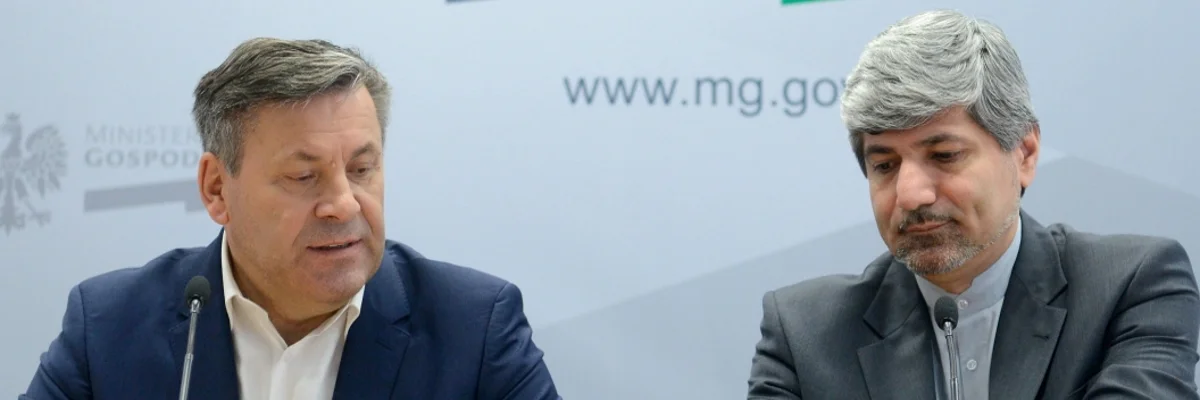The Iran Deal in Wider Europe: The Case of Poland
The story of Iran’s anticipated economic windfall following the JCPOA Iran Deal has centered on trade and investment from three countries: Germany, France, and Italy. German Vice Chancellor Sigmar Gabriel’s recent visit to Iran will soon be followed by visits from France’s Foreign Minister Laurent Fabius and Italy’s EU High Representative Frederica Mogherini.
These visits bring with them the promise of political support for boosted trade and investment ties potentially worth billions of dollars. A recent research note from the macroeconomic team at Deutsche Bank made an upbeat assessment on the back of Gabriel’s visit:
If German exports to Iran were to rise towards their previous peak, this would correspond to an increase of EUR 2 bn. The increase could even come to EUR 4.5 bn if Iran's export share were to rise back to 0.6%. In the latter scenario, German GDP growth could be stimulated by an increase of, say, a maximum of 1/4% – spread over several years.
But while business reporting and research notes have focused on the prospects in Iran for Europe’s largest economic actors, other opportunities have gone less noticed.
Consider Poland, Europe’s 10th largest economy. This September a Polish economic trade mission led by Economic Minister Janusz Piechociński will travel to Iran. This is one of several such visits in recent years. In May, a delegation of around 100 business people traveled to Iran with Polish Deputy Foreign Minister Katarzyna Kacperczyk. The upcoming economic mission is part of a newly established “Go Iran” program devised by the Economic Ministry. Around 50 major Polish companies are expected to participate.
The visit is likely to be well-received in Iran. Poland and Iran have historically enjoyed friendly ties. In fact, they have the longest consecutive diplomatic relations between any two countries, and on March 1, 2015, celebrated their 540th anniversary of relations. Ties were strengthened through various episodes in history, including during the Second World War when over 120,000 Polish émigrés sought refuge in the ancient city of Esfahan. Some of them remained long after the war, even marrying locals. Polish tourists continue to travel to Iran in significant numbers, which itself presents a market opportunity.
Despite this shared history and cultural affinity, however, overall trade has remained meager, especially under the pressures of sanctions. Last year, Polish exports to Iran amounted to just EUR 34.9 million, while imports to Poland were valued at EUR 22.4 million. These figures are just a tiny fraction of the EUR 2 billion in exports achieved by Germany in 2013.
However, Poland and Iran should and could have much larger economic cooperation in the near future. Over the past thirty five years, many issues have limited the potential of trade between the two countries, namely the economic influence of the Soviet Union, the USSR's subsequent collapse, and Poland seeking collaboration with Western Europe and private-sector led initiatives for its growth. But with the new geopolitical realities heralded by the JCPOA agreement, new Polish-Iranian economic opportunities could come online.
In many corporations, Poland and Iran are actually part of the same operational region. This is both true when considering companies with EMEA (Europe, Middle East, Africa) divisions, and also, more specifically, for companies with CEBAME (Central Europe, Balkans, Middle East) divisions.
The countries in Central Europe and the Middle East share similar levels of development and industrialization.
Polish and Iranian officials typically mark out three sectors for collaboration when speaking of economic opportunities: agribusiness, machinery and transportation, and oil and gas.
In the area of agricultural and food and beverage exports, Iran is an attractive market with huge demand. Poland’s agricultural sector is currently undergoing a “golden age” with agri-food exports rising to USD 27 billion in 2014. Polish food brands are already familiar to many Iranians, with E. Wedel chocolates and Pudliski sauces present on Iranian shelves.
Piechociński, the Economic Minister, reacted to the July 14 JCPOA agreement by noting that the deal could be a huge opportunity for Polish agribusiness particularly in the export of poultry and beef.
But heavy industry, transportation, and oil and gas are also sectors that could see activity. Piechociński marked out the “great opportunity to sell several thousand [train] carriages, several thousand trams, subway cars.” Machinery and transportation equipment amount to 37.8% of Polish exports, valued at around USD 60 billion.
In terms of oil and gas, Iran’s value as an engery supplier was first mooted in 2008, when the Polish gad firm PGNiG signed a tentative agreement for the import of Iranian gas. At the time, Poland was seeking to wean itself off reliance from expensive and politically risky Russian supply. Sanctions ended the scope for collaboration, but prior to the July agreement, PGNiG announced it was interested in picking up its operations in Iran again, with plans to open an office for to scope possible joint ventures.
The case of Poland reminds us that post-JCPOA economic opportunities will not be limited to major economies like Germany, France, and Italy. Smaller European countries may enjoy special advantages in being able to focus high-level political and economic resources behind trade and investment development plans. Iran clearly has many "suitors" as senior political and business delegations are expected in Iran. The question remains whether the Iranian authorities and business community will be able to coordinate activities on their end to make sure economic opportunities can be realized.
Photo Credit: Meghdad Madadi, Tasnim News Agency




